For once, I am not going to analyse my original analysis or evaluation. I am going to leave this as nature intended it twenty-one years ago. The inspiration for the thesis, Saving Private Ryan has been reviewed. So the end is here, the end of the thesis, that is the final part, no more crossing t’s and dotting i’s.
Conclusion
There are various themes that have developed in the Second World War feature film genre despite difficulties in deciphering individual thematic differences from film to film. Therefore, general trends only appear when a selection of films is considered. It is these changes that have been identified here.
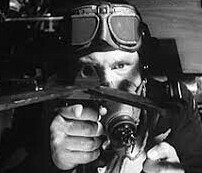
Changing Themes
A major thematic change that developed around 1970 is the change in attitude favouring the pursuit of war. Initially, the prevalent attitude was support for the war, as represented by numerous films that portrayed heroes and glorified stories. Many of these films are depicted in almost Boy’s Own comic style, an ideal medium to translate onto film. Stories such as The Dam Busters and The Great Escape concentrate on deeds and the duty to perform the mission and rarely dwell on the larger implications of the war in general.
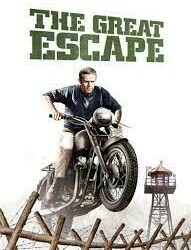
They are linear stories containing no implications or subtexts. The violence inherent in warfare is not dwelt upon. Battle or action scenes appear choreographed, and the grim effects of weapons are ignored.
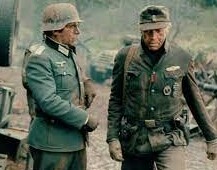
Anti-War move
However, in the early 1970’s, anti-war stories began to appear with more complicated stories. In this context, Cross of Iron with its blatantly anti-war stance is typical of the new genre while Enemy Below produced in 1957 is clearly well ahead of its time with a strong anti-war stance.
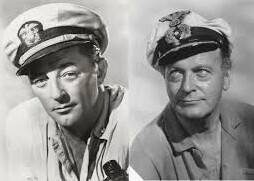
Another key change is the move to consider other ranks and not just officers. Films such as The Desert Fox, The Dam Busters, and Patton concentrated mostly on the deeds of heroic officers. Generally, later productions such as The Big Red One, Saving Private Ryan, and The Thin Red Line concentrated on the actions of common soldiers and lower-ranked officers.
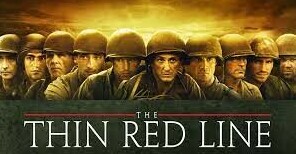
Citizen Soldiers
Such characters and their deeds become secondary to the inner turmoil that the characters such as Steiner (Cross of Iron), The Four Horsemen (The Big Red One), and Captain Miller (Saving Private Ryan) suffer. Miller’s character is significant because there is no distinction between him and his men when personal feelings are dealt with. He is just as scared and confused as his men about the war and their mission. Most of these characters are portrayed as civilians who either felt duty-bound to enlist or were conscripted. They are not professional soldiers and represent the civilians whose innocence and moral values are challenged as battle commences.
Causes
This change in emphasis be attributed to a diverse number of factors. The main were undoubtedly the direct and indirect influences of the Vietnam War, the Civil Rights movement on both America’s domestic and foreign policies and ultimately the film industry. The Vietnam conflict became the basis for war stories while television coverage of the war desensitised the population to the horrors of war.
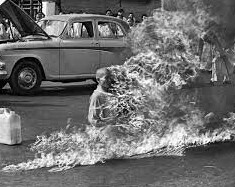
In a historical context, many filmmakers, and actors in the immediate post-war period (The Second World War) had primary experience of the war that they were translating onto the screen. The new breed of filmmaker emerging from the cauldron of anti-Vietnam protests, civil rights demonstrations and the Summer of Love had ideas and values that were very different.
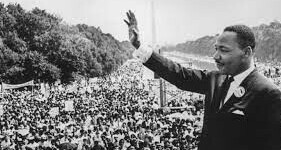
These filmmakers had a markedly different perspective from their predecessors; their primary experiences of a new war did not appear to them or many of their generation to have the moral justification that their father’s and grandfather’s wars had done. The moral judgments that were developed at this time towards the Vietnam War can be seen as being applied to the Second World War. That is the victims of the war in Vietnam were the innocent of both sides. The films of the post-1970 era begin to show this fact is true for the Second World War as well. They show that even though the war had moral justification, it was not all heroics and glory, the innocent were again terrified victims.
The first casualty of war is innocence
Whereas there is a definite change from a pro-war to an anti-war perspective in many films, the destruction of innocence transcends the whole 60-year period studied here. Huntley Haverstock, initially innocent of the European situation only grasps the situation when he witnesses what he thinks is Van Meer’s assassination.

However, there is a difference in how individual characters react to the destruction of innocence. Haverstock epitomises earlier definitions when he gives chase to the assassin but the Russian prisoner of war in Cross of Iron is petrified by the whole situation. The Jews in the Krakow ghetto are similarly petrified in Schindler’s List and so are most of the crew of Memphis Belle and Corporal Upham in Saving Private Ryan.
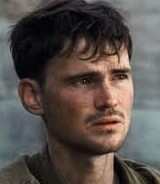
The grim reality of their respective situations immediately forces all characters to readjust forcing many of them to mature before their time.
What of the Germans?
To maintain that the Second World War was a moral crusade from an Allied perspective, German characters in earlier films were often treated as Nazi characters. German characters were rarely treated as heroes. Even when German characters are central to the film they are not treated heroically as seen in 49th Parallel where the Germans are treated as evil monsters while in The Desert Fox deals with many German characters as unthinking militarists and Nazis.
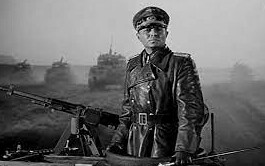
Rather than treating Rommel as a hero, he is treated as an admirable adversary. In Cross of Iron, a film promoting an anti-war theme, its German characters are treated differently with only one of Steiner’s platoon a Nazi. A clear distinction is therefore made between Steiner and most of his unit who are fervently anti-Nazi and anti-war. Only Stransky, the aristocratic new officer stresses duty to the Nazi state.
Another theme developed in relation to German characters in 49th Parallel continued throughout this study is that the Allied characters remain alive and victorious while German characters end up dead and defeated. The only exception to this appears in Cross of Iron. The film fades to the sound of Steiner’s laughter with the viewer unaware of whether Steiner and Stransky survived. This ending arose because the film had both English and German producers and because with the Cold War, Germany was no longer the enemy. The film is set on the Eastern Front considering a German perspective with Russia/USSR replacing Germany as the threat/enemy. Interestingly, there has never been a film produced by either the American or British film industries where the main characters are Russian with only Russia producing a Second World War film from an entirely Russian perspective.
Educational Value
Lastly, it should be noted that the inherent dramatization that occurs in film production produces a lack of historical objectivity. This lack is exacerbated by the propaganda that often appears in war films. Some films considered here have been actual wartime occurrences, but none can be used as historical evidence. Most films either deal with a condensed overview of actual events or in fact weave a story. Most recently, this problem occurred with the film U-571, a film where the crew of an American submarine captured an Enigma Machine from a German U-Boat.
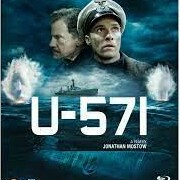
Such an event did occur, but it was a British crew that captured this important machine that helped enable code breakers at Bletchley Park to break German Naval codes.
The educational value of Second World War feature films is dubious in terms of military history. Still, there are two educational aspects that can be gleaned from a selection of these films. The first is that films that deal with the Second World War represent a microcosm of the film industry and the numerous factors that affected it during this tumultuous 60-year period. The second factor, propaganda, relates more to military studies. All war films are arguably propaganda and reflect attitudes and values within a society at that time, war films specifically Second World War films are good resources for elements of social and political history.
Let me know what you think.
All the best
A happy not a cross T
p.s. despite not being covered in the thesis, Ice Cold In Alex is the banner picture, because I feel like I have been on a similarly long journey and deserve what he’s just about to have!
